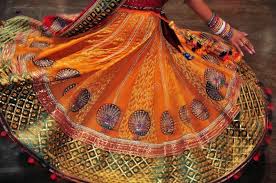Introduction
The global fashion industry is a dynamic tapestry of influences, drawing inspiration from myriad sources to create trends that captivate audiences worldwide. Among these diverse influences, Indian culture stands out as a significant source of inspiration, weaving a rich narrative into the fabric of contemporary fashion. With its vibrant textiles, intricate embroidery, and historic elegance, Indian fashion offers a treasure trove of elements that have profoundly impacted global fashion trends. This essay explores the historical context, key elements, and contemporary manifestations of Indian culture’s influence on fashion, while also addressing challenges and future prospects in this cross-cultural exchange.
Historical Context
Indian fashion has a storied history that has subtly shaped Western fashion for centuries. The influence began as early as the 16th century, when European traders and colonizers encountered Indian textiles and techniques. Indian fabrics, particularly those from the Mughal era, were renowned for their quality and artistry. The silk and cotton industries flourished, with Indian textiles like muslin and chintz making their way to Europe through trade routes established by the British East India Company. This early introduction of Indian fabrics set the stage for a deep and lasting influence on Western fashion.
The impact of Indian textiles was further amplified by the historical trade routes, including the Silk Road and maritime routes connecting India with Europe and the Middle East. These routes facilitated the exchange of not only goods but also ideas, allowing Indian textiles and designs to influence European fashion trends. The intricate patterns and luxurious materials of Indian fashion became highly coveted in Western markets, marking the beginning of a cross-cultural dialogue that continues to this day.
Key Elements of Indian Fashion
Indian fashion is characterized by several key elements that have made a significant impact on global trends.
Traditional Textiles: Indian textiles are celebrated for their diversity and craftsmanship. Fabrics such as silk, cotton, and wool have been central to Indian clothing for centuries. Silk, with its luxurious texture and vibrant colors, has influenced the design of evening wear and formal attire globally. Cotton, known for its breathability and comfort, has inspired casual and summer wear. The distinct weaves and patterns of Indian textiles have been incorporated into global fashion, offering a unique blend of texture and color.
Embroidery and Prints: Indian embroidery techniques, such as Zardozi and Chikan, are renowned for their intricate detail and artistry. Zardozi, involving elaborate threadwork with gold and silver, has influenced high fashion and couture collections worldwide. Similarly, Chikan embroidery, with its delicate needlework, has inspired contemporary fashion designers. Indian prints, such as paisley and block printing, have also left an indelible mark on global fashion. The paisley pattern, originally derived from Persian motifs and popularized in India, has become a staple in Western fashion collections.
Silhouettes and Draping: Traditional Indian garments, such as sarees, lehengas, and dupattas, have had a notable impact on global fashion. The saree’s elegant drape and versatile styling options have inspired Western designers to explore new ways of draping and layering. Similarly, the lehenga’s intricate embellishments and voluminous skirts have influenced evening wear and bridal collections internationally.
Major Indian Fashion Icons and Designers
The influence of Indian culture on global fashion has been significantly amplified by both historical figures and contemporary designers.
Historical Figures: Indian royalty, with their opulent attire and elaborate accessories, played a crucial role in shaping global fashion trends. The regal garments worn by figures such as Maharajas and Maharani have inspired Western designers with their luxurious fabrics, intricate embroidery, and unique silhouettes.
Contemporary Designers: Modern Indian designers have brought Indian aesthetics to the global stage with remarkable success. Designers like Sabyasachi Mukherjee, Manish Malhotra, and Anita Dongre have gained international acclaim for their innovative fusion of traditional Indian elements with contemporary fashion. Their collections, which often feature rich fabrics, intricate embroidery, and vibrant colors, have captivated audiences worldwide and cemented Indian fashion’s place in global trends.
Indian Fashion in Global Runways and Collections
Indian fashion’s presence in global runways and collections reflects its growing influence on the international stage.
Fashion Weeks: Indian designers have made notable appearances at major global fashion weeks, including Paris and New York. Their collections often showcase a blend of traditional Indian techniques and modern design sensibilities, demonstrating the versatility and global appeal of Indian fashion.
Collaborations: Collaborations between Indian designers and international fashion brands have further highlighted the fusion of cultural influences. These partnerships have resulted in unique collections that blend Indian textiles and craftsmanship with Western fashion trends, creating innovative and diverse fashion statements.
Influence on Western Fashion
The influence of Indian culture on Western fashion is evident in several ways:
Adoption of Indian Fabrics: Indian textiles, such as paisley prints and block-printed fabrics, have been integrated into Western fashion collections. The use of these fabrics has introduced new patterns and textures to global fashion, enriching the diversity of design options available.
Trend Setting: Indian-inspired colors, patterns, and embellishments have set trends in global fashion. The use of vibrant hues and intricate details, often associated with Indian fashion, has influenced color palettes and design elements in Western collections.
Cultural and Social Impact
The impact of Indian fashion extends beyond design, influencing cultural exchange and social dynamics.
Cultural Exchange: Indian fashion has facilitated cross-cultural exchange, fostering greater understanding and appreciation of diverse cultural aesthetics. The incorporation of Indian elements into global fashion has created opportunities for dialogue and collaboration between cultures.
Representation and Diversity: Indian fashion has played a role in promoting diversity and inclusivity in global fashion. By showcasing a range of cultural influences, Indian fashion contributes to a broader representation of styles and identities in the fashion industry.
Popular Indian Fashion Trends Worldwide
Several Indian fashion trends have gained popularity worldwide:
Boho Chic: The bohemian style, characterized by its relaxed and eclectic aesthetic, has been influenced by Indian textiles and designs. The use of Indian prints and embellishments has become a defining feature of this trend.
Ethnic Fusion: The fusion of traditional Indian elements with modern Western fashion has led to the creation of unique and stylish looks. This trend combines the elegance of Indian garments with contemporary design, resulting in innovative and versatile fashion statements.
Challenges and Criticisms
Despite the positive impact of Indian fashion on global trends, there are challenges and criticisms to consider:
Cultural Appropriation: Issues related to the appropriation of Indian designs and symbols without proper acknowledgment have raised concerns. It is essential to address these concerns by promoting respectful and informed engagement with cultural elements.
Sustainability Concerns: The global demand for Indian textiles and fashion has raised questions about sustainability. Ensuring that traditional craftsmanship is preserved and supported in an environmentally conscious manner is crucial for the future of Indian fashion.
Future Outlook
The future of Indian fashion’s influence on global trends is promising, with several key developments on the horizon:
Evolving Trends: Indian fashion is likely to continue shaping global trends through its rich cultural heritage and innovative design. The fusion of traditional and contemporary elements will likely remain a key feature of global fashion.
Growing Influence: As Indian designers and brands gain more international recognition, their influence on global fashion is expected to grow. This increasing presence will further highlight the diversity and creativity of Indian fashion.
Conclusion
The influence of Indian culture on global fashion trends is a testament to the rich heritage and creative innovation that Indian fashion brings to the international stage. From traditional textiles and embroidery to contemporary design and global collaborations, Indian fashion has made a significant impact on global fashion trends. As the industry continues to evolve, it is essential to celebrate and respect cultural influences while promoting ethical and sustainable practices. By embracing the richness of Indian fashion, we contribute to a more diverse and inclusive global fashion landscape.




